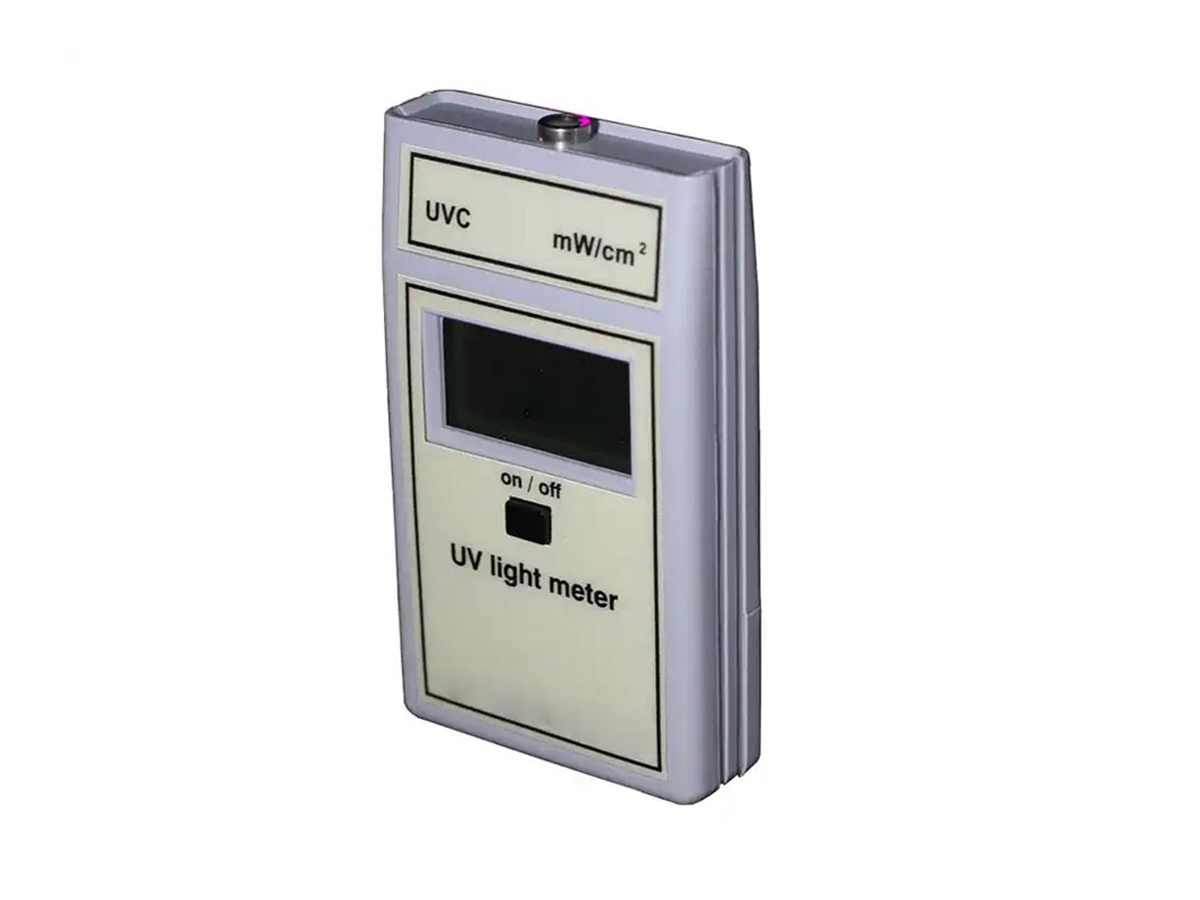UV-C Irradiance Meter
NIST traceable, hand-held UV light irradiance meter with an integral sensor. Compact and durable for single-handed use.
- Measure UV in the wavelength range of 246 – 268nm
- Measurements are shown in mW/cm2
- Supplied with certificate of calibration
- Worldwide delivery – contact us for shipping costs
Typical applications include monitoring drop off of UV bulbs and tubes and transmission testing of PPE, screens and guards.
Contact us for price and availability
Join us for a free UV safety webinar, designed to help you understand the legal requirements around the use of artificial UV light equipment in the workplace.
Description
The UV-C Irradiance Meter offers high precision in measuring UV-C light intensity, specifically designed for monitoring germicidal and disinfection applications. This device delivers real-time data on UV-C irradiance, allowing users to verify that systems are operating effectively for microbial control. Compact and user-friendly, it’s ideal for healthcare, laboratories, industrial sites, and HVAC settings where accurate UV-C monitoring is critical. With its sensitive UV-C sensor and durable design, this meter is an indispensable tool for professionals committed to UV-C efficacy and safety compliance.
Applications
- Measurement of UVC irradiation level to determine the time to achieve a dose necessary to inactivate (kill) specified micro-organisms.
- Monitoring drop off of UVC light irradiance during the operating life of UVC germicidal bulbs and tubes.
Sensor
The sensor consists of a Silicon Carbide (SIC) photodiode chip and a UV filter. It is completely insensitive to UV and visible light longer than 280 nm and infrared radiation. The meter’s spectral response only covers the UV region from 245 – 270 nm.
Operation
To operate your UV meter, aim the sensor window located on the top panel of the meter directly at a UV source. Press and hold push-button switch on the face of the unit. Aim sensor window in the top panel of meter directly at UV source. Note reading on LCD and record if required.
The battery operation voltage is 9 V down to 6.5 V. Below 6.5 V the LCD numbers will begin to dim, indicating the need for a battery replacement. Under “typical” service load, the battery should last about 2 years.
- Wear eye and skin protection when checking UV lamps (a face shield that provides wrap-around protection is ideal).
- Allow lamps to warm-up prior to taking readings (at least 5 minutes).
Notes
- When comparing different types of lamps consider readings to be relative rather than absolute.
- Lamps that peak near 255 nm (newer designs) will read higher than lamps that peak near 265 nm.
- Do not subject the meter to extremes in temperature, humidity, shock or dust.
- Use a dry, soft cloth to clean the instrument. Keep the sensor free of oil, dirt, etc.
Specification
| Measurement unit | mW/cm2 |
| UV spectral response | 246 – 268 nm |
| Peak response | 250 – 260 nm |
| Measuring range | 0 – 19.9 mW/cm2 |
| Display graduation | 0.1 mW/cm2 |
| Display | 3.5 digit LCD |
| Weight | 128 g |
| Dimensions | 105 mm x 60 x 30 mm |
| Operating temperature range | 0 – 37 oC |
| Operating humidity | 5 – 80 & RH |
| Power supply | 9 V battery |
| Sensor | GaAsP photodiode |
| Accuracy | + / – 10 % Ref NIST |
| Calibration interval | 6 – 12 months depending on usage |

